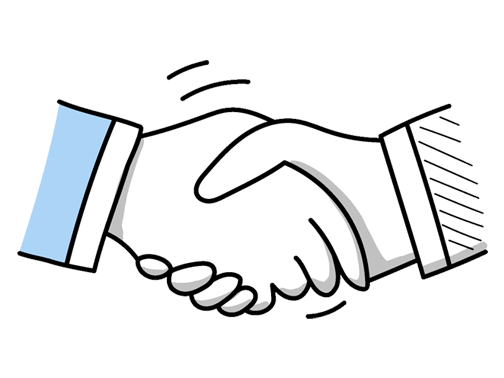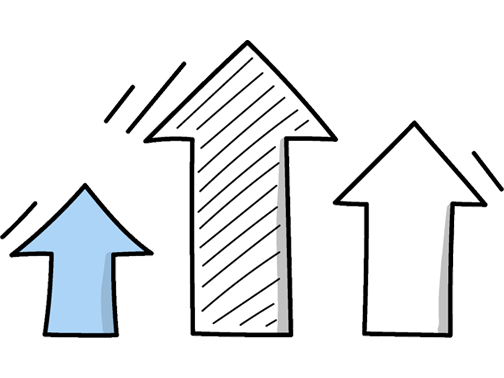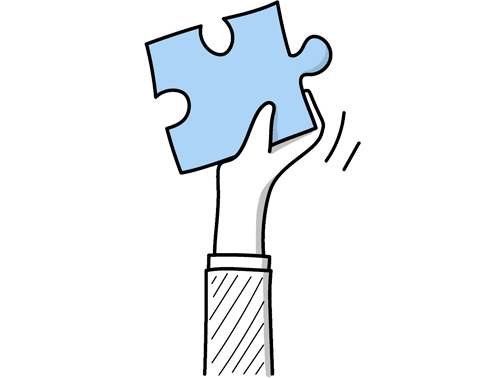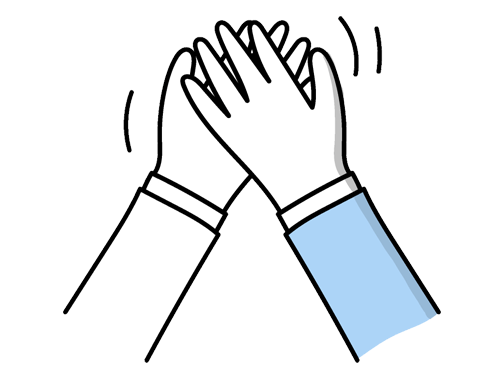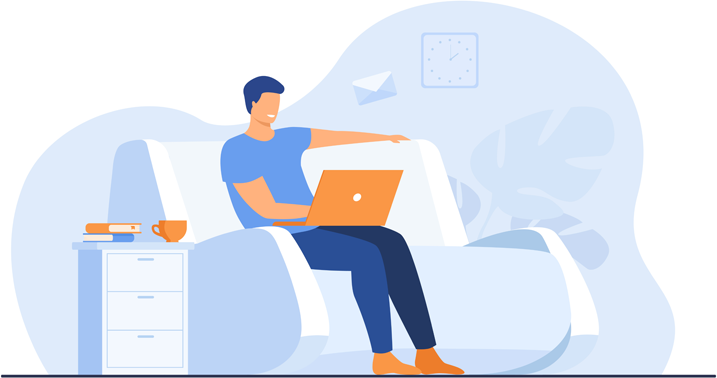Art Assistant Interview Questions (2025 Guide)
Find out common Art Assistant questions, how to answer, and tips for your next job interview
Practice Interviews Online - Identify your strengths and weakness in a realistic Art Assistant mock interview, under 10 minutes
Practice Now »Art Assistant Interview Questions
Interviewers ask this question to assess your technical skills and how they support your artistic work. You should confidently describe your experience with specific graphic tablets like Wacom or Huion and explain how these tools make your creative process more efficient and precise.
Example: I’m quite comfortable with graphic tablets and digital drawing tools, having used them regularly for various projects. They really streamline the creative process, allowing for quick adjustments and experimentation. I’m always keen to explore new software or updates, as I find staying up-to-date helps me bring fresh ideas to life more efficiently. For example, transitioning from mouse to tablet improved both my precision and workflow significantly.
Hiring managers ask this to understand your specific contributions and how you collaborate within a team. You need to clearly describe your responsibilities and how your efforts supported the project's success.
Example: In my last team project, I took on the role of coordinating creative ideas and supporting the artists to bring concepts to life. I helped organise materials and ensured deadlines were met, which kept the workflow smooth. For example, I assisted with creating mood boards and managed communication between team members, so everyone stayed on the same page and the project progressed efficiently.
What they want to know is if you can stay flexible, communicate clearly, and keep your work organized when plans suddenly change. You should say that you quickly adjust priorities, inform your team right away, and use tools like to-do lists to stay on track and maintain quality.
Example: When last-minute changes come up, I stay calm and reassess priorities to keep things on track. I make sure to communicate clearly with the team so everyone’s aligned, which helps prevent any confusion. For example, in a previous project, a sudden art brief change meant shifting layouts quickly, but by staying organized and focused, we delivered on time without compromising quality.
Employers ask this question to assess your communication, problem-solving, and professionalism in a team setting. You need to explain how you listen carefully to all sides, stay calm and respectful, and work creatively to find solutions everyone can accept.
Example: When disagreements arise, I focus on understanding everyone’s perspective by listening carefully. I find that keeping a calm and respectful tone helps the team stay open and constructive. For example, in a previous role, we had differing views on a project layout; by encouraging open dialogue, we found a middle ground that everyone felt good about. It’s about working together to find a practical solution without letting emotions take over.
This interview question helps the employer see how well you organize and prioritize your work, which is key in a fast-paced art assistant role. You need to explain that you use tools like digital calendars or task lists to stay organized and describe how you adjust your schedule when urgent tasks come up.
Example: I like to start by breaking down my tasks and setting clear priorities, usually with a simple to-do list or a digital planner. If something urgent comes up, I reassess and adjust my schedule to stay on track. For example, while assisting on an exhibition setup, I shifted focus quickly when a last-minute artwork delivery arrived, ensuring everything stayed on course without stress.
This interview question aims to assess your time management and prioritization skills under pressure. You need to explain how you stayed organized and focused to meet deadlines efficiently.
Example: In my previous roles, I’ve found that staying organized and prioritizing tasks early really helps when deadlines are tight. For example, at a gallery, I broke down large projects into manageable steps and checked in regularly with the team to keep everything on track. Staying calm and focused allowed me to deliver quality work without feeling overwhelmed.
This question helps interviewers see how you keep the team connected and projects on track. You need to say that you actively listen by asking questions, keep everyone updated with clear communication, and adjust your style to fit different team members.
Example: To keep communication effective, I make it a point to really listen and understand where everyone’s coming from. I also keep everyone updated through regular chats or quick check-ins, so no one feels out of the loop. Depending on who I’m talking to, I adjust how I explain things—whether it’s a quick sketch or a detailed email—to make sure the message lands clearly.
Questions like this assess your ability to handle multiple tasks efficiently under pressure. You need to explain how you prioritized tasks by deadlines, used tools like a planner to schedule your time, and adapted when new tasks appeared.
Example: During a busy exhibition launch, I mapped out all my tasks by deadline and importance, breaking them into manageable chunks. When unexpected issues came up, like last-minute artwork adjustments, I quickly reshuffled my schedule without losing focus. This approach helped me stay on track and ensure everything was ready on time, even under pressure. It reinforced the value of staying organized while remaining flexible.
What they want to understand is your experience and versatility in handling different art projects and your ability to contribute effectively. You need to briefly describe the types of projects you've worked on, your specific roles, and any positive results or skills you gained from those experiences.
Example: I’ve been involved in a range of projects, from gallery installations to community murals. My role often includes coordinating materials and supporting artists with technical tasks. One memorable project was helping organise a local exhibition, which taught me a lot about logistics and teamwork. These experiences have helped me develop a keen eye for detail and a practical approach to supporting creative processes.
Employers ask this question to see how you handle pressure and manage your time effectively. You need to briefly describe a specific situation, explain the steps you took to stay organized, and highlight the successful outcome.
Example: Sure! Here's a natural, polished response for you:
In a previous role, I was asked last minute to prepare materials for an exhibition opening the next day. I quickly organised the artwork, checked details, and liaised with the printers to ensure everything was ready on time. It was a bit intense, but prioritising tasks and staying calm helped me deliver without compromising quality. It showed me how important flexibility and clear communication are under pressure.
This question is designed to see how well you collaborate and contribute to a team, which is essential for an art assistant supporting creative projects. You need to describe a specific project, your role, and how your teamwork helped achieve a successful outcome.
Example: In a recent project at my previous role, our team collaborated to organise a local art exhibition. I helped coordinate between artists and the venue, ensuring smooth communication. Seeing the event come together and receive positive feedback was rewarding. It highlighted how teamwork and clear roles can turn creative ideas into something tangible and successful.
What they want to know is why and how your personal inspirations shape your art, showing your passion and creative process. You should briefly mention specific sources that inspire you and explain how these influences appear in your work, expressing genuine enthusiasm for creating art.
Example: I find inspiration in the everyday—nature’s shapes, the way light falls, even the stories people share. These small moments spark ideas that I love to explore through color and texture. Painting a simple leaf or capturing urban life connects me to my surroundings and fuels my creativity. It’s this constant curiosity and passion that keep me motivated and eager to bring fresh perspectives into my work.
What they want to see is your creativity and skill through tangible examples, showing your ability to contribute effectively as an art assistant. You need to confidently present your best work, highlighting projects that demonstrate your range and attention to detail.
Example: Certainly, I’d be happy to share examples of my work. I’ve created pieces ranging from digital illustrations to mixed media projects, some of which were showcased in local galleries. I also maintain an online portfolio that highlights my recent collaborations and personal art explorations. I can provide the link or bring physical samples if that’s helpful.
What they want to know is how well you communicate and work with others to achieve shared goals, especially across different teams. In your answer, clearly describe how you explained your ideas, coordinated tasks, and solved any conflicts to successfully complete a project together.
Example: In my previous role, I worked closely with the marketing and design teams to create a gallery event. We had to align on visuals and messaging while managing tight deadlines. I made sure to listen carefully and share ideas openly, which helped us resolve misunderstandings quickly and deliver a cohesive presentation. It was rewarding to see how our combined efforts brought the project to life smoothly.
This question helps the interviewer gauge your familiarity with essential digital tools and your ability to adapt to technology in an art assistant role. You need to clearly mention which digital illustration tools you’ve used and briefly highlight your proficiency or specific projects where you applied them.
Example: I’ve worked extensively with digital illustration tools like Adobe Photoshop and Procreate, creating detailed artwork and editing images for various projects. For example, I helped design promotional materials by layering textures and adjusting colours to match the brand’s style. I enjoy exploring different brushes and techniques to bring ideas to life digitally, which I find really enhances both speed and creativity in the design process.
This interview question aims to assess your technical skills and attention to detail in enhancing images. You need to explain the specific tools and methods you use, such as adjusting levels, curves, and using healing brushes, while emphasizing your approach to maintaining image quality and consistency.
Example: When working on color correction, I usually start by adjusting the white balance and exposure to ensure the image looks natural and true to life. For retouching, I focus on subtle enhancements—like smoothing skin tones or removing minor distractions—without losing the original character. In a recent project, gentle curves and selective color adjustments really helped bring out depth and vibrancy while keeping the artwork authentic.
This question helps the interviewer see how you approach challenges creatively and add value beyond routine tasks. In your answer, describe a specific project where you used a unique idea or method to solve a problem or enhance the artwork.
Example: During a university exhibition, we faced limited space for displaying large artworks. I suggested using vertical panels and repurposed materials to create modular stands, which not only maximised the area but added an interactive element visitors appreciated. This creative approach helped showcase more pieces effectively and engaged the audience, proving that resourcefulness can enhance both functionality and visitor experience.
Questions like this assess your ability to listen, adapt, and improve your work based on others' input. You need to say that you actively seek constructive feedback, reflect on it thoughtfully, and use it to enhance your art while maintaining your creative vision.
Example: I see feedback as an opportunity to see my work from a fresh perspective. When I receive input, I take a moment to understand the intention behind it and consider how it can improve the piece. For example, in a recent project, adjusting colour choices based on feedback helped the final artwork better connect with the audience. It’s about staying open and letting ideas evolve naturally.
Hiring managers ask this question to see how you approach challenges creatively and adapt when standard solutions don’t work. You need to describe a specific example where you used an original idea or method to solve a problem effectively.
Example: In a previous role, we faced a tight deadline for an exhibition setup but lacked enough display materials. I suggested repurposing everyday objects creatively, turning old wooden pallets into art stands. This not only solved the issue quickly but also added a unique, rustic element that visitors appreciated. Sometimes, a fresh perspective on what's around can transform a challenge into an opportunity.
This interview question aims to understand how you manage time and stay organized under pressure. You need to explain that you assess deadlines and project importance first, then create a clear schedule to balance and complete tasks efficiently.
Example: When juggling several projects, I start by understanding each deadline and what’s most urgent. I break tasks into manageable steps, often sketching out a simple timetable. For example, while helping organize an exhibition, I prioritized timely communications with artists first to keep everything on track. Staying flexible is key, as unexpected changes happen, but having a clear sense of priorities helps me keep everything moving smoothly.
Interviewers want to know if you have the technical skills needed to handle their projects efficiently. You should mention the specific art software you are skilled in, like Adobe Photoshop or Illustrator, and briefly highlight how you use them in your work.
Example: I’m comfortable using programs like Adobe Photoshop and Illustrator for editing and creating artwork. I’ve also worked with Procreate on the iPad, which is great for sketching and more tactile digital art. For layout and organization, I find InDesign useful, especially when preparing pieces for print or digital portfolios. These tools help me bring ideas to life efficiently and with detail.
What they want to know is how well you can support an artist or art director by managing tasks, solving problems, and communicating effectively. In your answer, briefly describe a specific project where you helped coordinate materials or schedules, overcame challenges, and maintained clear teamwork through regular updates.
Example: In a recent project, I worked closely with an art director to organise materials and keep the schedule on track. When we faced last-minute changes to the layout, I suggested alternative displays that saved time and maintained the design’s integrity. Throughout, I maintained open communication, ensuring the director’s vision was fully realised while managing practical challenges smoothly. It was rewarding to see how teamwork brought the project together seamlessly.
Hiring managers ask this to see how you work with others to create and refine ideas, ensuring the project meets its goals. You should explain that you encourage everyone’s input to generate diverse ideas, then evaluate and prioritize them based on the project’s needs, while staying open to feedback and adapting as the session progresses.
Example: When I join a brainstorming session, I like to encourage everyone to share their unique perspectives freely, creating a relaxed space for creativity. I listen actively and build on ideas by asking questions or suggesting tweaks. If someone offers feedback, I take it on board and adjust my thinking accordingly. In a recent project, this approach led us to combine two concepts that wouldn’t have emerged individually, resulting in a stronger final design.
What they want to know is if you are proactive about learning and adapting to new tools in a fast-changing field. You need to say that you regularly follow industry blogs, take online courses, and practice new software to keep your skills current.
Example: I keep up with new design and art software by regularly exploring online tutorials and industry blogs. I also follow leading artists and designers on social media to see what tools they’re using. When possible, I try out free versions or demos to get hands-on experience. For example, recently I started experimenting with Procreate after watching some creative process videos from my favourite illustrators.
Hiring managers ask this question to see how well you can connect and collaborate with others, which is crucial in a creative team setting. You should say that you build rapport by actively listening, communicating honestly and clearly, and participating in team projects to support and understand your colleagues better.
Example: I find that really paying attention when colleagues share their ideas helps me understand where they’re coming from. Keeping conversations open and respectful builds trust, which makes working together smoother. I also enjoy taking part in team projects or informal chats, as they create natural opportunities to connect and collaborate. For example, discussing art concepts over a coffee break often leads to fresh insights and a stronger team bond.
Ace your next Art Assistant interview with even more questions and answers
Common Interview Questions To Expect
The interviewer is looking for a brief overview of your background, experience, and skills relevant to the position. Focus on your professional achievements and goals.
Example: Sure! I have a background in art and design, with experience working on various projects as an art assistant. I am passionate about creating visually appealing work and collaborating with others to bring creative ideas to life. My goal is to continue growing and learning in the field of art and design.
The interviewer is looking for a candidate to demonstrate their skills, experience, and passion for the role. Answers should highlight relevant qualifications and how they align with the job requirements.
Example: You should hire me for this position because I have a strong background in art and design, with a degree in Fine Arts. I also have experience working as an art assistant in a gallery, where I honed my skills in assisting with installations and exhibitions. I am passionate about art and eager to bring my creativity and attention to detail to this role.
The interviewer is looking for you to highlight your key skills, abilities, and qualities that make you a strong candidate for the position. Be sure to provide specific examples to support your strengths.
Example: I would say my biggest strengths are my creativity, attention to detail, and ability to work well in a team. For example, in my previous role as an art assistant, I was able to come up with unique ideas for projects and execute them with precision. I also enjoy collaborating with others to bring a vision to life.
The interviewer is looking for examples of problem-solving skills, conflict resolution abilities, and how you handle challenges in the workplace. Be honest and provide specific details.
Example: Sure! One challenge I faced was when a project deadline was moved up unexpectedly. I stayed calm, prioritized tasks, and communicated with my team to delegate responsibilities. We were able to meet the deadline successfully by working together efficiently.
The interviewer is looking for a clear and concise explanation of why you transitioned from your previous career to your current one. Be honest and highlight any relevant skills or experiences gained from your previous career.
Example: I decided to change career paths because I realized my passion lies in the creative field, specifically in art. I have always been drawn to visual arts and wanted to pursue a career where I could utilize my artistic skills. My previous job provided me with valuable experience in project management and organization, which I can apply to my role as an art assistant.
Company Research Tips
The company's website is a goldmine of information. Look for details about the company's history, mission, and values. Pay special attention to any information related to the art department or any projects they've worked on. This will give you a sense of the company's style and what they value in their art. Also, check out their 'News' or 'Blog' section to stay updated with their latest projects and achievements.
Tip: Look for any recurring themes or keywords on the website. These can give you insight into the company's culture and priorities.
Social media platforms can provide a wealth of information about a company. Look at their posts, the comments they receive, and how they interact with their audience. This can give you a sense of the company's brand and how they communicate. For an Art Assistant role, platforms like Instagram or Pinterest might be particularly useful to understand the company's aesthetic and creative direction.
Tip: Don't just look at the company's posts - also look at what they're sharing and who they're following. This can give you additional insight into their influences and tastes.
LinkedIn can provide valuable information about the company's structure, the backgrounds of their employees, and their hiring trends. Look at the profiles of people who work in the art department to get a sense of what skills and experiences the company values. You can also see if the company has any shared connections with you, which could provide additional insight or potential talking points in your interview.
Tip: Use LinkedIn's 'Alumni' tool to see where employees of the company went to school and what fields they studied. This can give you an idea of the educational background they might be looking for.
Stay updated with the latest news and trends in the art industry. This will not only show that you are passionate and proactive about your field, but also that you understand the context in which the company operates. Look for news articles, blogs, or industry reports related to the company or their projects.
Tip: Use Google Alerts to stay updated with the latest news about the company and the art industry. Set up alerts for the company name, key projects, and industry keywords.
What to wear to an Art Assistant interview
- Smart casual attire
- Clean, well-fitted jeans
- Neutral coloured blazer
- Comfortable, polished shoes
- Minimalistic jewellery
- Light, natural makeup
- Neatly styled hair
- Avoid overly bright colours
- Carry a portfolio of your work
- Avoid heavy perfumes
